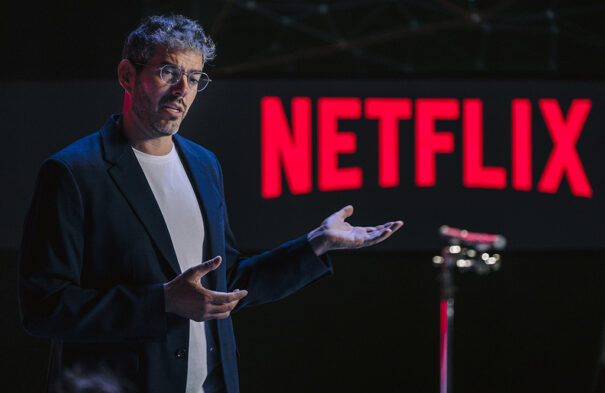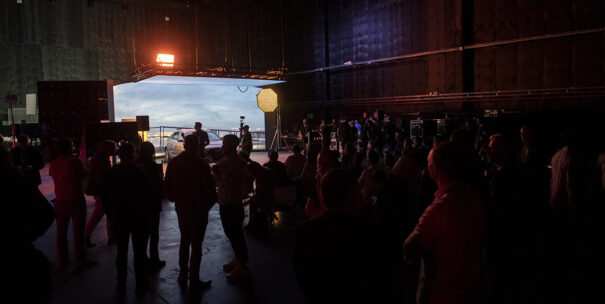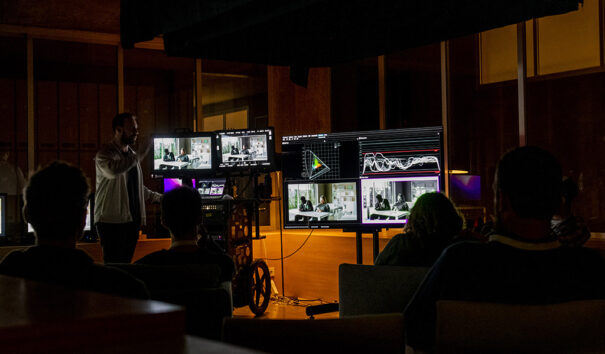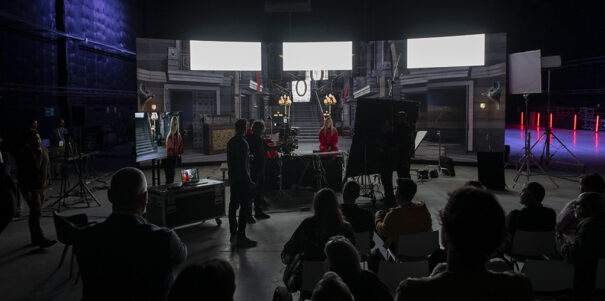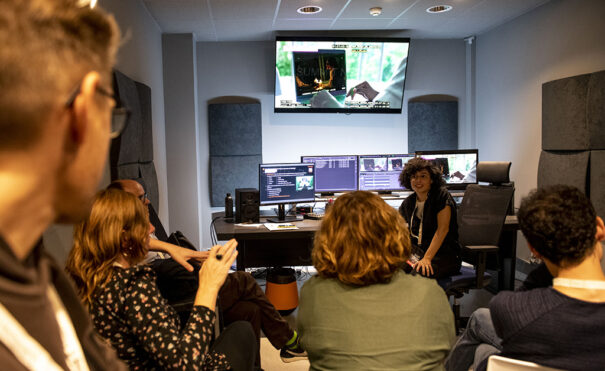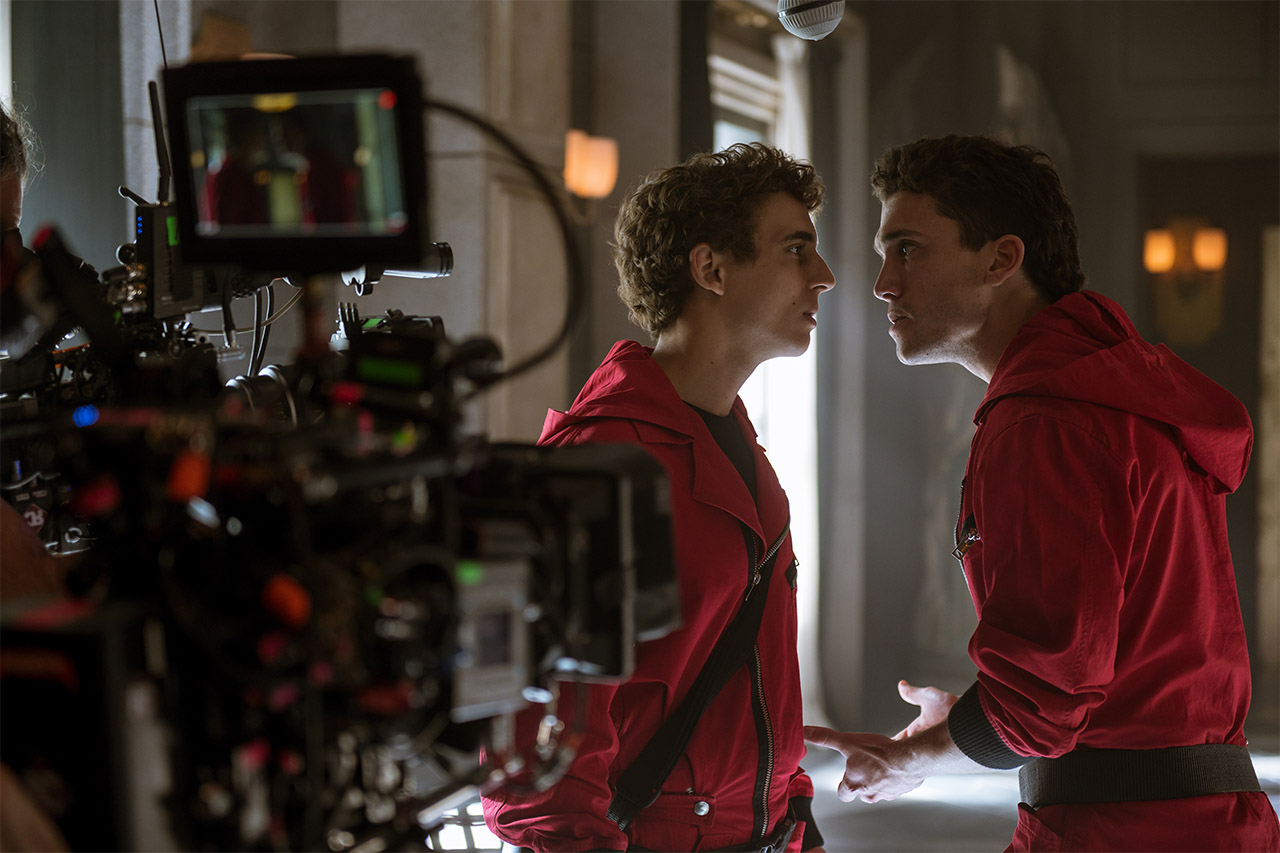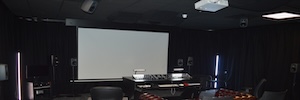¿Cómo aborda Netflix España la postproducción? Una entrevista con Víctor Martí
Víctor Martí, director de postproducción de Netflix en España y Portugal, desvela en esta entrevista todas las claves conceptuales y tecnológicas del tratamiento de la postproducción de la multinacional estadounidense.
La apuesta de Netflix por España está fuera de toda duda. La plataforma de vídeo bajo demanda (y quién sabe lo que deparará su futuro) ha puesto a España en el foco mundial de la producción audiovisual con la consolidación de sus estudios en la Madrid Content City. El talento creativo de productoras como Vancouver Media (Sky Rojo, La casa de papel), una política amable con las producciones extranjeras por parte de las administraciones, y la solvencia, talento y preparación de la industria española han terminado por consolidar un atractivo presente y un futuro prometedor en un contexto ciertamente incierto.
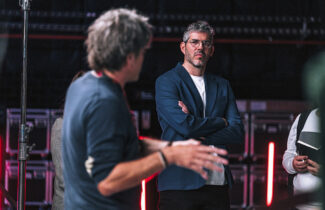 En paralelo a la producción de contenidos, la postproduction prolifera adoptando flujos vanguardistas, instalaciones de primer nivel with altas medidas de seguridad and a mentalidad abierta para abrazar nuevas tecnologías como la producción virtual, de la cual muchos originales de Netflix, como la inminente 1899, se están beneficiando.
En paralelo a la producción de contenidos, la postproduction prolifera adoptando flujos vanguardistas, instalaciones de primer nivel with altas medidas de seguridad and a mentalidad abierta para abrazar nuevas tecnologías como la producción virtual, de la cual muchos originales de Netflix, como la inminente 1899, se están beneficiando.
Aún con todo, todavía desafíos que abordar. La industria española de la postproducción se encuentra en una encrucijada: puede seguir manteniendo su producción actual, o dar el salto para convertirse en una referencia europea y mundial. Para conseguirlo, tal y como lo identifica Víctor Martí, deberá afrontar importantes cambios acordes al signo de los tiempos.
Martí, ejecutivo responsable de la postproducción de Netflix en España y Portugal, no solo aborda en esta entrevista la actualidad más acuciante de la postproducción española y lusa. También abre las puertas a la metodología de trabajo, las tecnologías clave and the próximas iniciativas de la plataforma en España.
Nuevos horizontes para la creatividad
¿Cómo está ayudando Netflix a hacer crecer la industria de la postproducción en España?
Una de las prioridades, a través de nuestro centro de producción y de nuestras producciones, es acercar a los profesionales a las últimas tecnologías de producción y postproducción y las mejores prácticas para que puedan llevar su ambición creativa hacia nuevos horizontes. Como ejemplo, cuando llegamos a España en 2018 no se había producido aún ningún proyecto en España con imagen en HDR (High Dynamic Range, alto rango dinámico). El primer show que completamos con esta tecnología fue Criminal, en verano del 2019. Desde entonces, ya hemos estrenado más de 60 producciones con este tipo de masterización en España. Esto lo hemos conseguido haciendo formación proyecto a proyecto y técnico a técnico. Con el objetivo de escalar estos esfuerzos, recientemente hemos organizado el primer Post Production Summit en nuestras instalaciones de Madrid Content City (en Tres Cantos), un ciclo de jornadas de formación eminentemente prácticas sobre postproducción, efectos visuales y producción virtual. Además, colaboramos de manera activa con entidades de referencia en la industria audiovisual española, como ECAM, TAI and ESCAC. A modo de ejemplo, en el caso de la ECAM y del ESCAC, hemos colaborado para sacar adelante sus dos masters en Supervisión y Coordinación de Post Producción, contribuyendo a definir el plan de formación para adaptarlo a las necesidades de la industria actual. También colaboramos regularmente con Masterclass en sus centros.
“Cuando llegamos a España en 2018 no se había producido aún ningún proyecto en España con imagen en HDR. (…) Desde entonces, ya hemos estrenado más de 60 producciones con este tipo de masterización en España”.
¿Cuál es la labor que emprende Netflix para la coordinación de la postproducción de sus ficciones?
En cualquier proyecto de Netflix siempre pedimos que haya un supervisor o coordinador de postproducción. No vemos posible empezar una producción sin tener esta posición cubierta. Es una figura clave para la gestión de los proyectos audiovisuales que permite asegurar que se cumpla el calendario de postproducción, el flujo de trabajo de imagen y sonido acordado y el presupuesto definido para estas partidas. Con la rápida evolución de los efectos visuales, la producción virtual, los flujos de trabajo en alto rango dinámico y los sistemas de sonido envolvente, estos profesionales son imprescindibles para el buen fin de cualquier producto audiovisual.
Desafíos para la postproducción española
¿Cuáles son las principales limitaciones de la industria de la postproducción en España, según han podido apreciar tras tener un importante papel en el mercado durante los últimos años?
Los principales retos a los que se enfrenta la industria de la postproducción en España es la falta de profesionales en el sector con capacidades técnicas actualizadas, principalmente por la falta de estudios reglados y por el constante cambio tecnológico. En el pasado, no ha habido escuelas que impartieran estos conocimientos y las pocos que lo hacían, tenían unos programas formativos poco adaptados a las necesidades actuales del mercado y a sus exigencias estructurales y tecnológicas. Además, la eclosión y rápida evolución de las tecnologías de postproducción desde la llegada de la era digital dibuja múltiples desafíos para los industria de este ámbito, que tiene que estar en constante desarrollo y formación.
¿De qué manera ha evolucionado el tratamiento de la postproducción durante los últimos años? ¿Cuáles son los últimos requisitos técnicos más comunes en sus producciones?
Los requisitos técnicos más comunes que pedimos actualmente en las producciones de Netflix son el trabajo en resoluciones UHD or superiores, con masterización en alto rango dinámico, en nuestro caso HDR Dolby Vision, y sonido envolvente Dolby Atmos. Además de estas características de masterización, para nosotros es muy importante conseguir flujos de trabajo con una buena gestión del color, “color management workflows” en inglés. Esto nos permite disponer de una imagen consistente en todas las fases de producción, saber que estamos todos trabajando en el mismo espacio de color y que tanto ejecutivos de Netflix como productores y creadores estamos viendo lo mismo. Con ello, las partes involucradas en los procesos creativos pueden tener una comunicación creativa objetiva y eficiente, y no perder el tiempo en dudas formales. Esta forma de trabajar aporta muchos beneficios en la cadena de producción. Nos permite preservar la intención creativa de los autores en toda la cadena postproducción; mejorar la comunicación entre equipos; permite ahorrar tiempo y, por tanto, dinero, en procesos de color y efectos visuales, y, finalmente, permite mejorar la creatividad del producto en cada una de las fases del proyecto.
Netflix, mano a mano con la industria
¿De qué manera trabaja con las compañías de postproducción Netflix? ¿Hay una serie de requisitos que fijan en términos de calidad y seguridad para poder trabajar con algunas de sus producciones?
Netflix siempre produce en España a través de productoras locales. Estas productoras son las encargadas de escoger a los equipos técnicos y a los provedores de servicios para llevar a buen puerto la producción. Para series y películas originales, podemos trabajar con cualquier empresa de postproducción que escoja la productora encargada del proyecto. Los únicos requisitos que pedimos son que la compañia de postproducción escogida quiera aprender a trabajar con nuestros flujos de trabajo and nuestras tecnologías de masterización, que esté equipada para ello y que siga unas simples medidas de seguridad informática.
“Netflix permite trabajar con cualquier software o hardware disponible en el mercado que sea capaz de gestionar los flujos de trabajo que recomendamos y que puedan masterizar en las especificaciones técnicas acordadas”.
¿Netflix está fomentando las alianzas con partners tecnológicos concretos para favorecer los flujos de trabajo de sus producciones?
No. Netflix permite trabajar con cualquier software o hardware disponible en el mercado que sea capaz de gestionar los flujos de trabajo que recomendamos y que puedan masterizar en las especificaciones técnicas acordadas. La única elección que ha hecho Netflix a nivel global ha sido escoger Dolby como sistema de HDR y de sonido envolvente de emisión para ofrecer a nuestros usuarios la mejor experiencia posible. Las tecnologías de Dolby nos permiten simplificar los flujos de trabajo en postproducción, reduciendo el número de materiales finales entre otros, a la vez que ofrecer a nuestros suscriptores la mejor calidad de imagen y de sonido disponible ahora mismo en el mercado.
¿Cómo se ha adaptado el equipo de postproducción de Netflix en España a los flujos de trabajo colaborativos, cada vez más frecuentes en todo tipo de producciones?
El próximo 22 de noviembre vamos a presentar la ampliación de nuestro centro de producción, con la que duplica su número de platos (que pasan de cinco a diez) e incorpora nuevas instalaciones de postproducción para que creadores y productores puedan dar vida a sus mejores historias. En ese sentido, entre las principales innovaciones que vamos a incorporar a nivel de postproducción se encuentran un laboratorio de rodaje and salas de montaje de última generación únicos en España que combinan las últimas tecnologías y fomentarán el trabajo colaborativo, en la nube y en remoto entre profesionales.
Producción virtual, HDR, WCG…
¿Cuál es el rol de las empresas de postproducción en los flujos de trabajo de producción virtual que Netflix, entre otros muchos agentes, están incentivando por su rendimiento y fiabilidad?
Debemos entender la producción virtual como una metodología que agrupa distintas tecnologías, y en consecuencia, las responsabilidades y funciones de las empresas de postproducción no difieren tanto respecto a sus atribuciones habituales. Podemos decir que en estos entornos tan altamente tecnificados, la consistencia de color y la rigurosidad de los flujos de trabajo toman aún más importancia porque el material capturado en cámara ya incorpora parte del trabajo de posproducción directamente en la imagen final. Esta tecnología está en constante evolución y utiliza componentes tanto de hardware como de software que no fueron creados específicamente para el cine, añadiendo un grado extra de complejidad. En este sentido, Netflix, mediante la difusión de las mejores prácticas y el soporte que brinda a sus producciones, contribuye a expandir el conocimiento para conseguir sacar el mayor partido posible a estas metodologías y ayudar a elevar el conocimiento en España.
“Desde el equipo de postproducción de Netflix damos libertad absoluta a los creadores para que decidan sobre la factura visual de la serie. No podemos tomar decisiones creativas en función de las condiciones de visualización de nuestros contenidos particulares de cada usuario”.
¿Cuál es la postura de Netflix sobre conceptos como HDR o WCG? ¿Se favorece su aplicación e introducción en cada original? ¿Depende de cada proyecto?
Desde nuestra llegada a España, hemos apostado fuertemente por el HDR, alto rango dinámico, y con ello también por unos colores más cercanos a la realidad (Wide Color Gamut). El HDR de Dolby, Dolby Vision, nos permite simplificar los procesos de postproducción y tener una distribución final del contenido más fiable preservando al máximo la intención creativa de los autores. Tal y como hemos indicado, Netflix ha favorecido el uso de esta tecnología desde nuestra llegada a España y actualmente ya disponemos de más de 60 títulos locales disponibles en nuestro servicio con este tipo de masterización. Durante estos 3 años hemos conseguido cambiar la industria local hasta el punto que ya no hay proyecto de ficción de Netflix España que no se finalice con esta tecnología. El HDR al final son mejores píxeles, con más rango dinámico, blancos más brillantes y negros más profundos, y con más colores. Es una tecnología que ha llegado para quedarse y que nos permite proteger la intención creativa de nuestros creadores y que la misma perdure en el tiempo sea cual sea el canal o soporte de distribución.
¿Existen recomendaciones por parte del equipo de postproducción de Netflix España sobre la factura visual de la serie sabiendo las condiciones (consumo móvil, difícil iluminación) a la que se somete en visionado de los contenidos?
No, desde el equipo de postproducción de Netflix damos libertad absoluta a los creadores para que decidan sobre la factura visual de la serie. No podemos tomar decisiones creativas en función de las condiciones de visualización de nuestros contenidos particulares de cada usuario. Lo que sí que trabajamos es para que la representación final sea lo más fiel posible a la masterización, sea cual sea el soporte de distribución. Para conseguirlo, distribuimos nuestro contenido en formato HDR Dolby Vision, que dispone, entre otros, de metadata dinámica para su correcta traslación visual a cualquier soporte de emisión HDR o SDR y que usa una curva de luminancia absoluta que evita cambios en la luminancia del cuadro de la imagen cuando se sube el brillo del televisor.
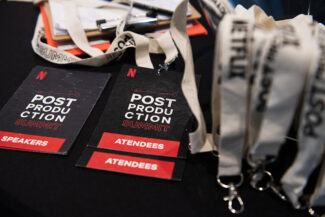 La Post Production Summit de Netflix
La Post Production Summit de Netflix
Recientemente, Netflix ha albergado en Madrid su Post Production Summit. ¿Cuál es el balance de la edición?
El balance es muy positivo. Durante las casi tres semanas de duración, el Post Production Summit se ha convertido en el punto de encuentro y debate de la producción en nuestro país. Alrededor de 300 participantes, desde productores y técnicos de la comunidad creativa y alumnos y formadores de escuelas de cine, han tenido la oportunidad de entrar en contacto con las mejores prácticas en posproducción y las tecnologías de vanguardia al servicio de la creatividad, como por ejemplo, los platós virtuales (pantallas LED) de última generación, que construimos para esta iniciativa. Uno de los objetivos que nos habíamos marcado era contribuir a reducir la brecha técnica y la falta de profesionales en algunas de las posiciones actualmente más demandadas, como son los supervisores de postproducción, productores de efectos visuales and técnicos especializados en producción virtual. Veremos durante los próximos meses si se han cumplido todos estos objetivos, pero estamos muy contentos con el impacto, la recepción y la participación de toda la industria en estas jornadas.
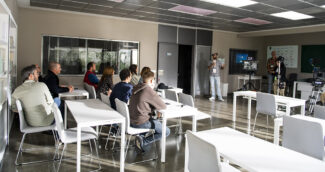 ¿Podría identificar las principales enseñanzas extraídas de este evento?
¿Podría identificar las principales enseñanzas extraídas de este evento?
Más allá de los conocimientos técnicos y teóricos adquiridos por todos los participantes, hemos detectado una necesidad en el sector por encontrarse and debatir en relación con las tecnologías de producción de última generación. La pandemia y la carga de trabajo del día a día no han permitido disponer de foros donde analizar conjuntamente los cambios y retos tecnológicos que se nos presentan día a día. El Summit ha generado espacios para la reflexión, el debate y la confrontación de ideas entre profesionales del sector en un momento donde hacían mucha falta. Hemos visto como empresas que compiten día a día entre sí compartían conocimiento y experiencias con los demás de forma generosa buscando el crecimiento conjunto como industria. Asimismo, se han creado espacios de comunicación y, espero, que de unión entre técnicos de producción, rodaje, y profesionales de la postproducción. Dos mundos que por la propia naturaleza de sus espacios de trabajo se han mantenido demasiado estancos en el pasado, pero que deberíamos acercar aún más para conseguir estar al nivel de las industrias más tecnificadas y avanzadas.
Retos para la industria española (y mundial) de la postproducción
¿Cuáles son los principales retos que tendrá que afrontar la industria española de postproducción en el futuro cercano para mantener su relevancia?
España tiene la oportunidad única de consolidarse como un referente internacional en postproducción, efectos visuales y producción virtual, al nivel de las industrias más tecnificadas. Para avanzar hacia este horizonte, como comentaba anteriormente, la formación, la creación de espacios de debate y colaboración y la comunicación entre equipos van a jugar un papel clave.
¿Y a nivel global? ¿A qué retos deberá enfrentarse la industria de la postproducción durante los próximos años?
Durante los próximos años, la industria de la postproducción se va a enfrentar a nuevos cambios tecnológicos, como los trabajos en la nube, en remoto o la automatización de ciertos procesos de poco valor añadido. Todo ello para mejorar el trabajo colaborativo, ser más eficiente y dedicar así más tiempo a los procesos creativos, que es al final lo que nos debe permitir diferenciarnos. Tenemos mucho talento y potencial en las áreas creativas y debemos seguir avanzando en el conocimiento y el uso de nuevas tecnologías para ponerlas al servicio de la creatividad y convertirnos así en un referente internacional en áreas de postproducción, efectos visuales y animación. Debemos seguir el camino que hemos iniciado, siendo curiosos, abrazando los cambios tecnológicos, aprendiendo unos de otros y colaborando para crecer conjuntamente.
Una entrevista de Sergio Julián Gómez
Did you like this article?
Subscribe to us RSS feed And you will not miss anything.



